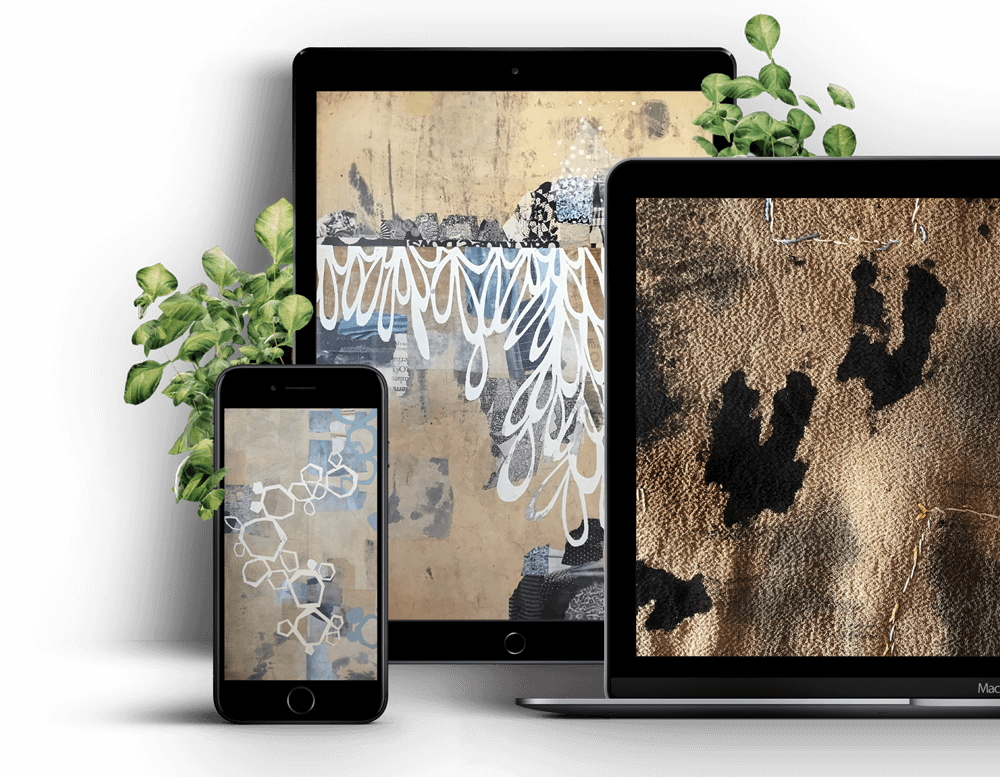Artist Q&A with Helen Terry Part One: Wicken Fen
Visual Narratives students recently enjoyed a a special live Q&A session with UK-based artist Helen Terry. Take a look at some of the highlights.
Take a look at the first of our two-part series sharing the highlights of our recent Q&A with UK-based artist Helen Terry.
About Helen
Helen Terry masterfully marries textiles with the art of mark-making using dye and stitch. She celebrates the beauty of unpredictability, often allowing accidental effects to emerge in her work. By combining techniques like screen printing and direct dye application onto antique cloth, Helen creates layered masterpieces that whisper stories from both sides.
Growing up on Hertfordshire farms and spending significant time in East Anglia, Helen’s connection to the environment is palpable. While she holds a degree in ancient and medieval history, her artistry has been honed through self-dedicated study.
In this first part of her Q&A with Fibre Arts, we explored her collaborative work with fellow artist Sally Tyrie.
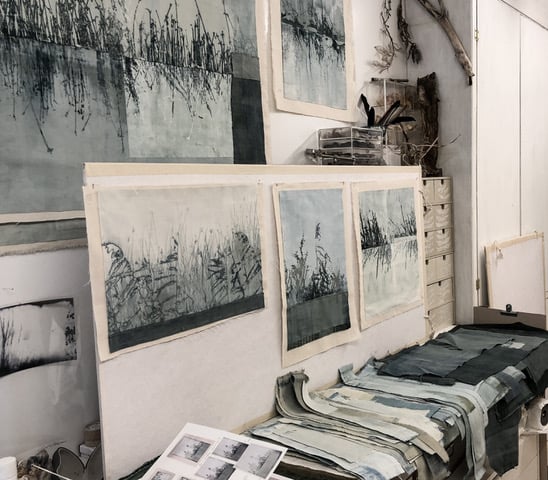
Sally Tyrie Collabs
Since 2018, Helen has become a frequent collaborator with her fellow UK-based artist, Sally Tyrie.
Helen explains that there’s a lot of common ground between her and Sally Tyrie, even though they work differently. “Sally’s techniques come from a traditional print-making discipline,” says Helen, “whereas I have come from more of a textile background. However, we both use photography and collage in our work and to develop our work. We both prefer abstracting images rather than using very literal ones. We’re both interested in the layers underneath the image as well. So, in terms of the historical or wider references that sit underneath. I’d say we also both have an interest in mark making and particularly printed marks and playing with those.”
Meeting Sally
Helen and Sally met because they were both exhibiting at the same gallery, and they saw each other’s work. “I think it was Sally,” says Helen, “who approached me and said, ‘We’ve got a lot in common.’ We decided to meet, and when we met up, we talked about doing a project together. We already sensed that we had enough common ground that it could work and that we could get on well enough together to be able to work together. The initial problem was finding a starting point because I was completely upfront. I did not want to work to a prescriptive theme.”
Helen and Sally put together a plan for their first work together, “We had the idea of choosing a place,” says Helen, “and organising the project around visits to that place over an extended period. And we had our own requirements. So I said it has to have water, and Sally said there had to be some kind of structure there as well as landscape, some sign of human habitation or intervention. Because Sally was over in Luton and I was in Essex, it had to be somewhere we could both get to within a reasonable period if we were going to visit it regularly.”
Wicken Fen
They settled on Wicken Fen (near Cambridge, to the north of London) for their work, leading to an exhibition, Reflections & Revelations, in Ely and to a series of installations of mixed media work in selected hides on the reserve called Hidden.
“Wicken Fen is one of the National Trust’s oldest nature reserves,” Helen says, “and it’s one of the oldest pieces of undrained fenland. In the country. The interesting thing about it is that it’s a managed landscape. It has to be managed by humans to keep it the way it is because if left alone, it will change and lose many of its qualities. I think we did 11 visits over 20 months. We hadn’t intended it to be 20 months, but it took us longer than we had originally planned to organise the exhibition, and so we just kept going.”
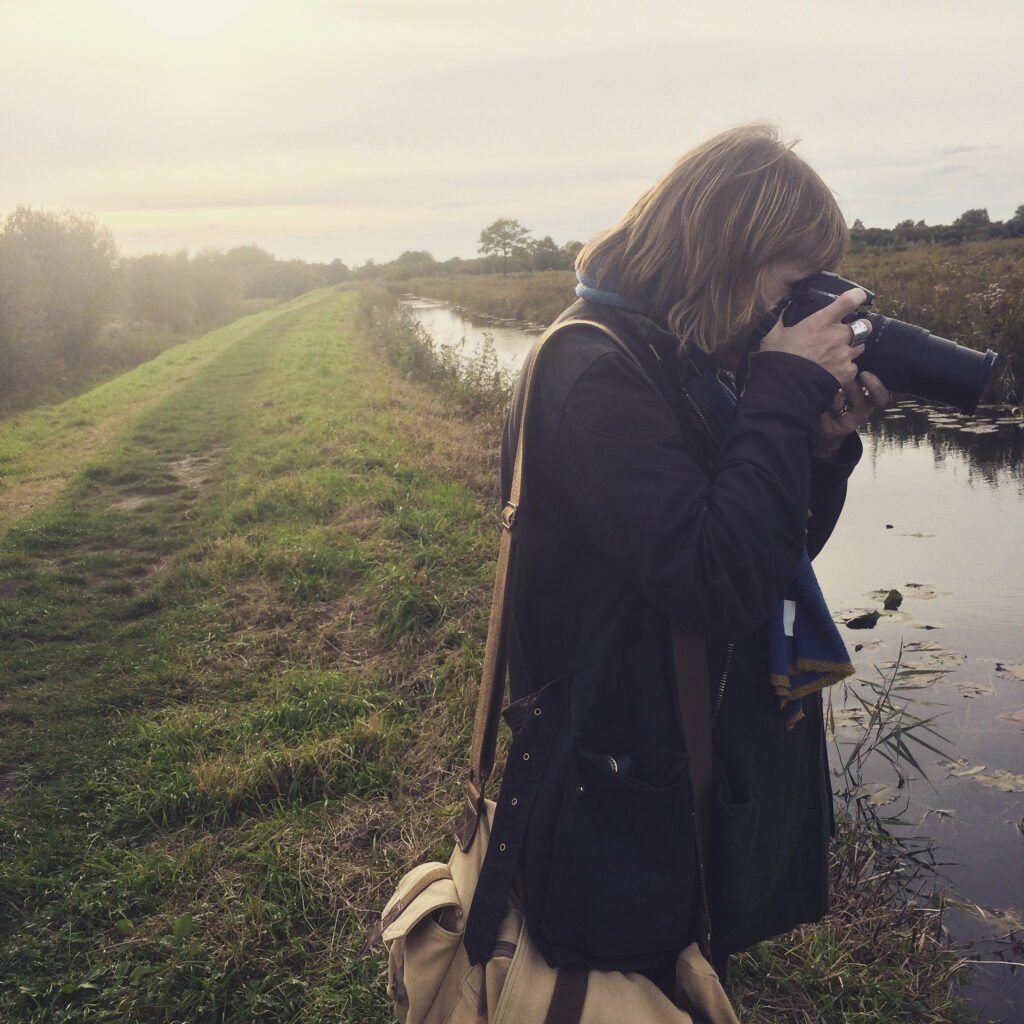
Surprises
Working at Wicken Fen came with several pleasant surprises for Helen, “There was this one visit,” she says, “where the Trust had been clearing one of the drainage ditches, and somehow they had stirred up the water, and it had turned this kind of milky green colour. And you had all the reeds and tree branches sticking out of the water and being reflected in the water, and at the same time, you had the shadows on the water. I must have taken 200 photographs because I was just seeing all these images through my viewfinder. I was just seeing “drawings”. But it turned out to be an interesting problem because I absolutely adored the photographs, and I adored the imagery, and at first I thought, ‘Okay, this is it. This is going to be my work.’ But it was so difficult to move away from the original photographs because they were so lovely in themselves.”
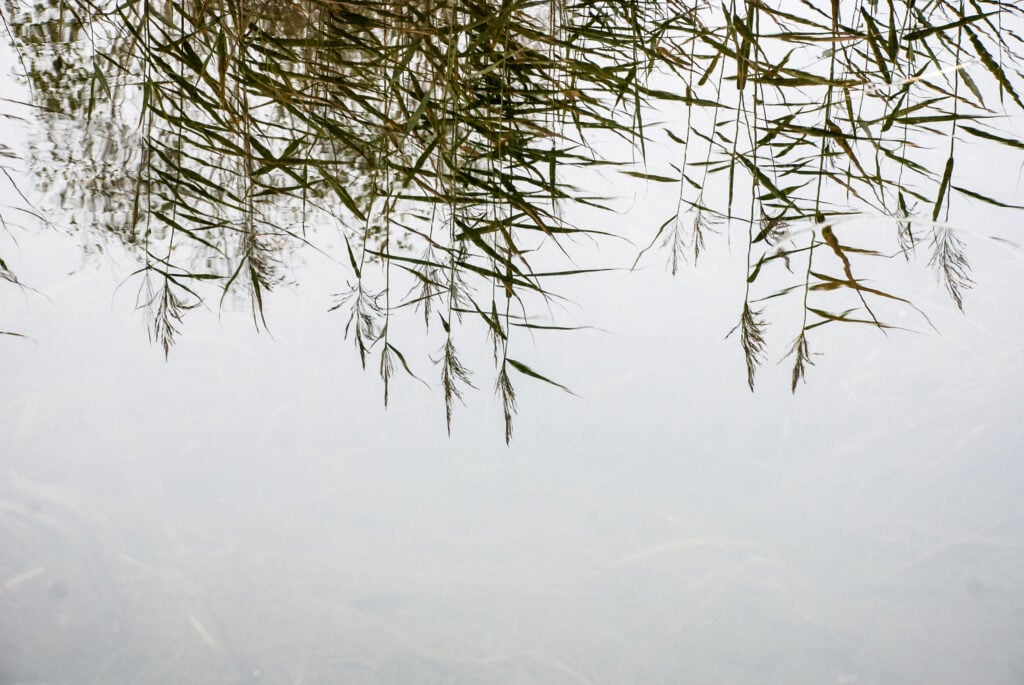
Collaborative work
Helen says that working collaboratively with another artist has unique advantages, “It expands your own field of vision,” she says, “because you’re not only looking at it through your own eyes, you get to see something or a place through the other person’s eyes as well. When we were going to the fen, I’d turn around, and Sally would be crouched down photographing something that I hadn’t even noticed, but because she was doing that, I would look at it as well.”
The benefits of collaborative work, says Helen, are also more direct, “There was the whole dialogue,” she says, “Every visit, we were talking about what we were noticing, what we were seeing, ideas for the exhibition, for the work. And it wasn’t that we were trying to unify our work. We were trying to bring our work together. We were always going to make our own work, but we definitely fed off of each other. Also, that ability to discuss what you are doing with someone else who knew why you were doing that and where you were coming from was just a really rich experience.”
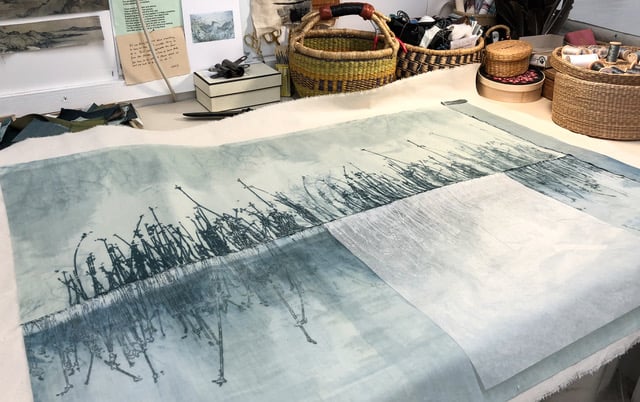
About Helen Terry
Helen Terry is an artist who works with textiles. Her work revolves around mark-making with dye and stitch, with a preference for processes that leave room for accidental and chance effects. Currently, this includes combinations of screen printing, mono-printing and direct application of dye onto antique cloth. She works on both sides, allowing faint marks to show through. The dyed cloth is then cut, torn, layered and stitched to develop relationships between marks and textures.
Helen’s work explores themes of ambiguity and change. It refers to the landscape of coastal marshes and estuaries where edges and boundaries are uncertain, never quite fixed as one thing or another.
A recurring theme is how we perceive and interpret fragments of information, instinctively looking for meaning or resemblance to something we recognise to make sense of things.
Helen grew up on farms in Hertfordshire and has spent most of her life in East Anglia, dividing her time between the Essex estuaries and the Norfolk coast and marshes. She has a degree in Ancient and Medieval History from the University of London and has developed her art practice through informal and independent study.
Want to know more? Take a look at Part 2 of our conversation with Helen Terry.
No video selected
Select a video type in the sidebar.
Join Our Newsletter
OUR YOUTUBE CHANNEL
View our interviews and more on our Youtube channel!
OUR FACEBOOK GROUP
Join our Community and stay updated with our upcoming announcements!

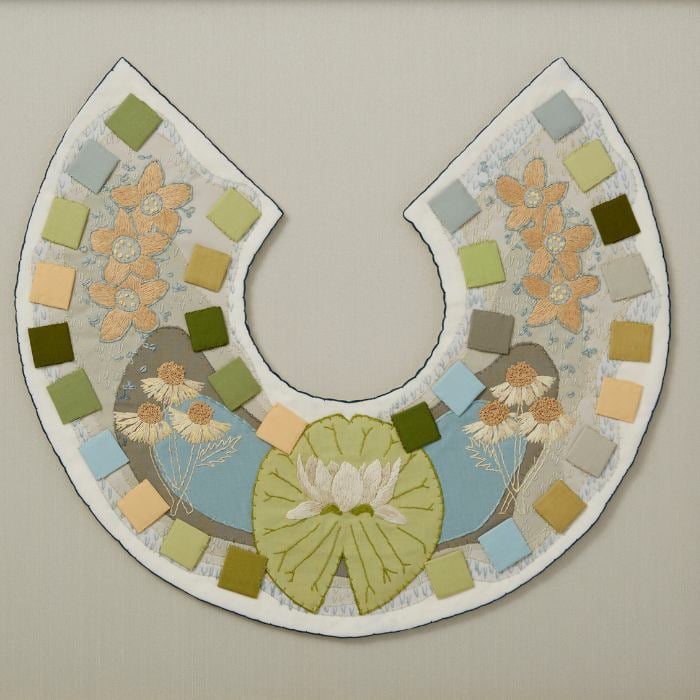
.jpg)
.jpg)
